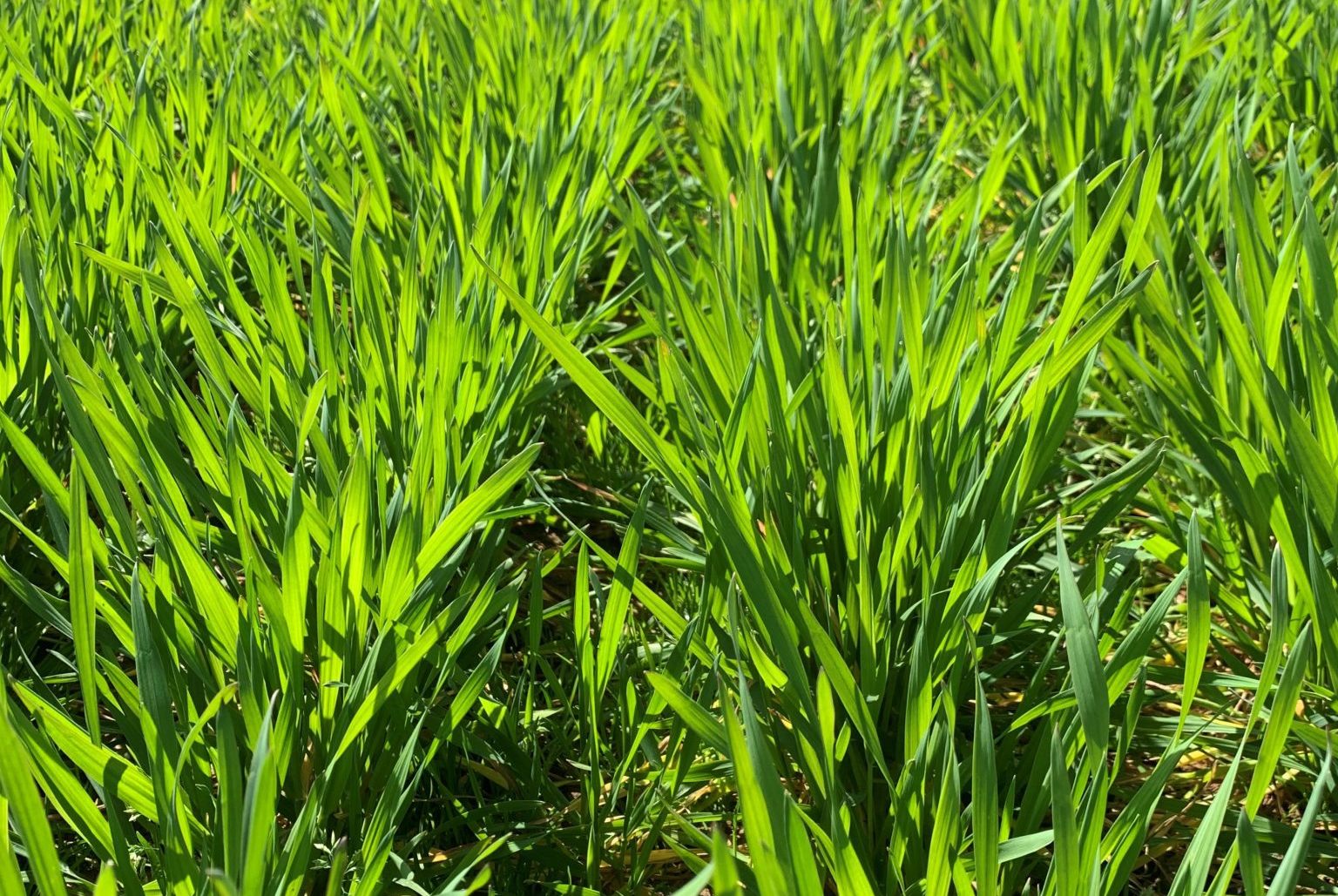Crop Production

Removing weedy grasses from grass crops is likely one of the most difficult tasks for weed scientists and farmers alike. Annual Italian ryegrass (Lolium perenne ssp. multiflorum) may be the biggest weed competitor for crops such as winter wheat and corn because of its germination timing, aggressive growth, and allelopathic potential.
Annual ryegrass is of specific concern for wheat production because it germinates when soil temperatures average 50 to 65 degrees F or when day/night temperatures range from 50/41 degrees F to 77/41 degrees F. These are also the ideal germination temperatures for winter wheat. Controlling annual ryegrass is important because it encourages a quality wheat crop and minimizes risks to future crops from latent seed in soil.
Management Options
When relying on herbicide programs for weed control, it is important to start clean and stay clean. It is recommended to target annual ryegrass before or immediately after germination. Herbicide burndown applications that occur immediately following wheat planting and prior to wheat emergence have been successful at controlling emerged weeds. Grass weeds like annual ryegrass or annual bluegrass (Poa annua) and broadleaf weeds like henbit have been successfully controlled when FirstShot is tankmixed with either Gramoxone or Roundup.
The active ingredient pyroxasulfone has been the focus for grass weed control in multiple research trials and is found to provide activity when applied preemergence to annual ryegrass. Pyroxasulfone is found in wheat-labeled products like Zidua, Anthem Flex, or Fierce EZ.
Table 1. Herbicide Options for Control of Annual Italian Ryegrass in Winter Wheat
**Pyroxasulfone rates in 2.8 fluid ounces per acre Anthem Flex = 2.5 fluid ounces per acre Zidua SC
| Product | Rate (per acre) | Labeled Timing of Treatment Pre Plant | Labeled Timing of Treatment Delayed Preemergence | Labeled Timing of Treatment Postemergence |
|---|---|---|---|---|
| Zidua SC (liquid) | 2.5 – 3 fl. oz.* | X | ||
| Zidua (dry) | 1.5 – 1.8 oz. | X | ||
| Anthem Flex | 2.8 – 3.3 fl. oz.** | X | ||
| Fierce EZ | 3 fl. oz. | X | ||
| Fierce EZ | 6 fl. oz. | X | ||
| Axial Bold | 15 fl. oz. | X | ||
| Powerflex HL | 2 oz. | X |
Applications are most successful when made following a timely burndown treatment. Pyroxasulfone products have provided on average greater than 85 percent control of annual ryegrass when treatments are made delayed preemergence to wheat, or when 80 percent of the wheat stand is at spiking (1/2-inch-long shoots). No crop injury is expected from Zidua or Anthem Flex when applied at this stage of growth.
If annual ryegrass escapes any treatment, Axial Bold or Powerflex HL have been successful as a rescue treatment when applied postemergence at labeled rates under ideal growing conditions. Axial Bold may be applied to wheat from emergence to the pre-boot stage of growth. Powerflex HL may be applied when wheat is between the thee-leaf to jointing stage of growth.
Conclusion
Although battling annual ryegrass may require an extra cost of time and money initially, research has shown that seed dies off in undisturbed soil at an average rate of 58 percent per year. Therefore, be proactive in weed management practices for at least two consecutive seasons to minimize long term impacts of weedy annual ryegrass.
Trade and brand names used in this publication are given for information purposes only. No guarantee, endorsement, or discrimination among comparable products is intended or implied by the Alabama Cooperative Extension System.

